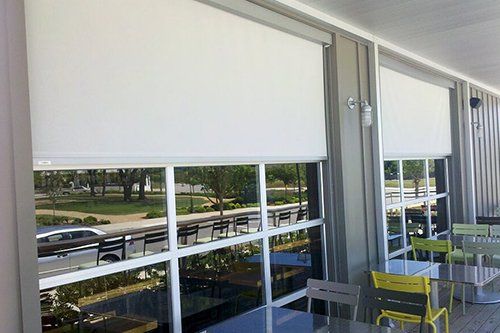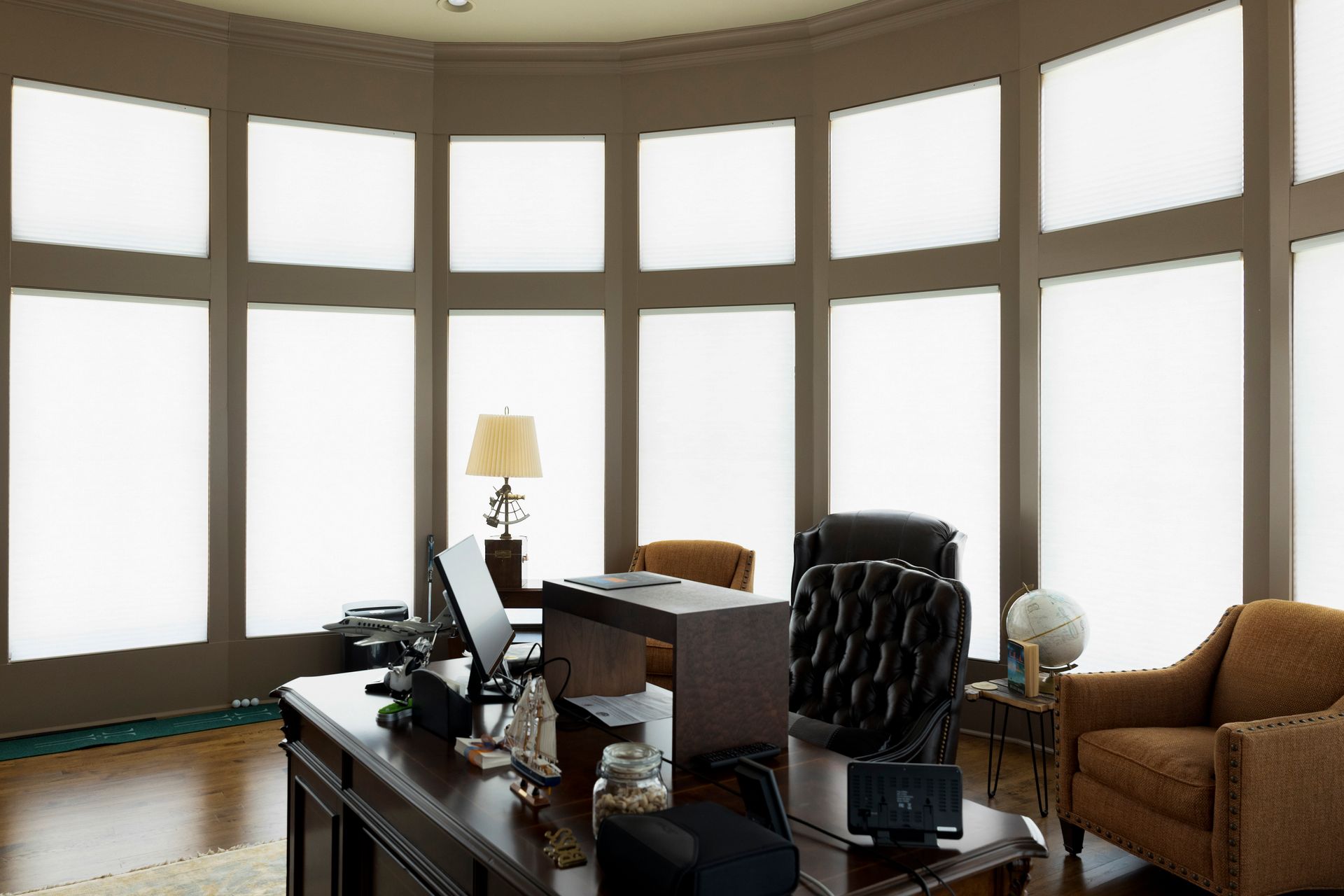In these days of ever-rising energy costs, everyone can benefit from new ways to save even more on their heating and air conditioning bills. One way to do just that is by choosing window coverings that boost energy savings through their excellent insulating properties. And the good news is that you don’t have to sacrifice great looks for practicality, because the most energy-efficient window coverings just happen to be as good-looking as they are practical! That’s a perfect definition of a classic win-win situation!
Before we talk about these energy-efficient window treatments, let’s take a quick “refresher course” in what the insulation industry refers to a “R-values”:
What is Meant by “R-value”?
The most common measure of energy-efficiency is known as “R-value”. R-values measure a given material’s thermal resistance. The higher the R-value, the better the material’s thermal resistance is. For example, a piece of 1/2″ plywood has an R-value of 1.25, and aluminum siding with a 1/2″ of insulation has an R-value which is slightly higher — 1.8. A solid-core wood door has an R-value of 2.2, making it the most thermal-resistant of the three materials.
The typical single-pane window has an R-value of 0.9. The generally accepted practice when calculating the R-value of a window treatment is to measure its R-value when it’s installed behind a single-pane window. Therefore, the R-values mentioned here for each window covering are based on that practice as well. Obviously, the R-values for each will be higher if you have double-pane windows.
Now, without further “ado”, we present the three most energy-efficient window coverings you can use in your own home:
Cellular Shades
By and large the most energy-efficient window treatment you can choose is a cellular shade. Cellular shades are available in a wide variety of fabrics, including single-cell and double-cell varieties. (Obviously, the R-value of a single-cell cellular shade will not be as high as the that of its double-cell counterpart.)
Cellular shades have a well-accepted range of R-values from 2.0 to 5.0. On the low-end of this range, a cellular shade will more than double the R-value of a single-pane window, while at the high-end of the range, it quintuples the R-value! Not bad for a window treatment that’s equally attractive in a variety of design settings, and available a variety of colors and in standard or top-down, bottom-up styles as well!
Plantation Shutters
Just as with cellular shades, the R-value of a plantation shutter will depend on the material used — generally, wood or vinyl. Both have great R-values (2.77 and 3.17 respectively), but if you’re going mostly for the highest R-value, then vinyl is your ticket! Although the R-values shown here (2.77 for wood and 3.17 for vinyl) are the accepted standard based on a report by the Smart Energy Alliance , it’s interesting to note that a Cornell study found that properly installed vinyl plantation shutters in a single-pane window can have an R-value as high as 4.0!
One thing is certain: Whether you choose a wood or a vinyl plantation shutter, your windows will look classically beautiful, no matter their shape or size!
Roller Shades
Versatile roller shades are available in a wide variety of patterns and light-filtering options from translucent to black-out. Their R-value will vary according to the style chosen, but the Cornell study cited above found their R-value ranges from 1.3 to 1.8. Light filtering and decorative roller shades will generally be on the lower end of the R-value spectrum, while black-out roller shades installed with channels to eliminate gaps will have the highest R-value. Roller shades are also available as solar shades, which will effectively reduce solar transmittance and increase solar reflection, thereby keeping your room cooler while simultaneously reducing glare in a bright room.
If you’d like to learn more about these energy-saving window covering options for your Central Alabama home, contact us at Just Blinds. We offer free on-site consultations, expert measuring and professional installation!
Expert Advice by Just Blinds


